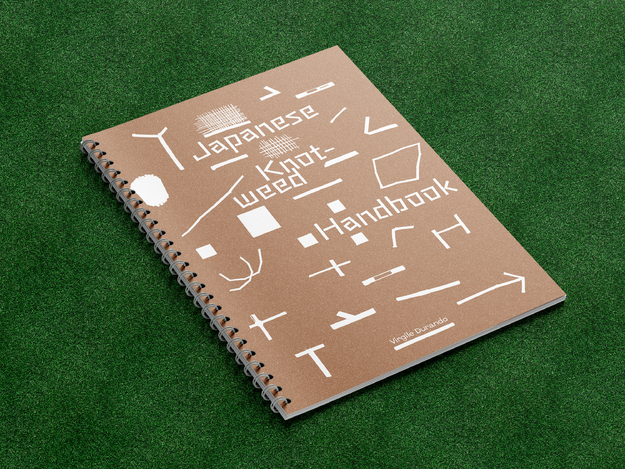In an interview with Virgile Durando, he explained how his interest in the Japanese knotweed came about and how his current residency is a continuation of his earlier research. His involvement with the plant began with finding an abundance of knotweed in his surroundings, urging him to delve deeper into its history.
“I had the chance to work at Le Luma, a place where we would do material research with different plants within the region of Arles in France. There was Japanese knotweed there, so we tried to find ways to use the plant in different applications.
From there I realised that the species actually came from the Netherlands, it was imported in the mid 19th century. Coming to the Netherlands I actually dived into the history of the plant, how it was brought to this country and how it got to be an invasive species. Understanding also what’s behind the word invasive. There are a lot of things behind calling a plant invasive, economically, and also politically. There are laws written specifically for these types of plants and animals. As soon as you start to dive into this you need to understand the material potential of the plant and so that helps also to see a future of how we can work with it and turn the problem into a solution. “
In the midst of learning about the plant’s history and the nuances surrounding it, Virgile began making some experiments with the Japanese knotweed as the basis for material and simultaneously forming a collection of knowledge on the species.
“The type of work I’ve been doing is mainly trying to understand how the plant can be transformed into boards, for example particle boards that you could use to replace wood in certain parts of a job. Looking at what kind of applications we could find for the material; first understanding the material itself.
I realized that there was no techniques or knowledge about ways to work with the plant. I’ve been mainly focusing on building up that knowledge, the set of tools, of techniques; creating an understanding of the material so that others can start working from the tools and techniques I’ve found in order to develop different usages for the plant. “
During his residency at Mediamatic, Virgile has worked on ways of transmitting this compilation of knowledge. As a part of the Japanese knotweed festival, he will be hosting various workshops where visitors can interact with him and learn the tricks and techniques he has developed through his extensive hands-on research with Japanese Knotweed. In addition, he is working on a book. A DIY-book for beginners to study the material and learn different ways of making creations out of the plant.
By working with the Japanese knotweed, assembling knowledge about its materiality and sharing it with an audience, Virgile is hoping to achieve a shift in mindset of how people view this species.
“I think it's something that I've already realised, the type of shift in mindset that my project could achieve because it stems from a project I did for my graduation, called the knotweed company and the knotweed workshop. These two projects occurred simultaneously for people to understand the potential value of Knotweed.
I had to show how a company could for example harvest the material which would then go to a craftsman that would then make use of it. A proof of how people's perception can change was the moment I presented them with dry knotweed stems, which are long brown looking canes. Most of them thought they were seeing bamboo. The fact that they perceive this invasive species as another plant, which is praised for its material qualities, I wondered if we could not only look at it like bamboo but also work with it in a similar way.
I believe that creating a body of knowledge surrounding the plant can help shift people's perception on what the future of Japanese knotweed can actually be.”




